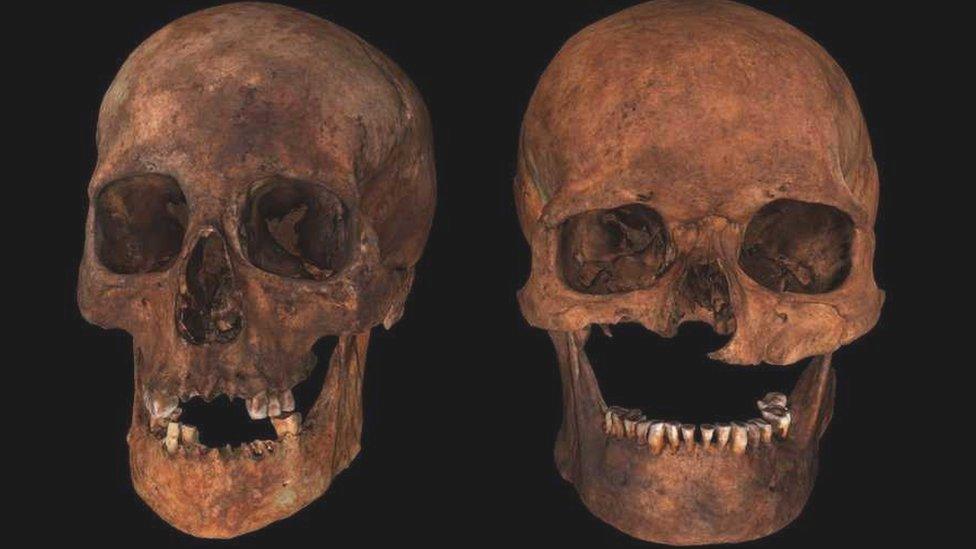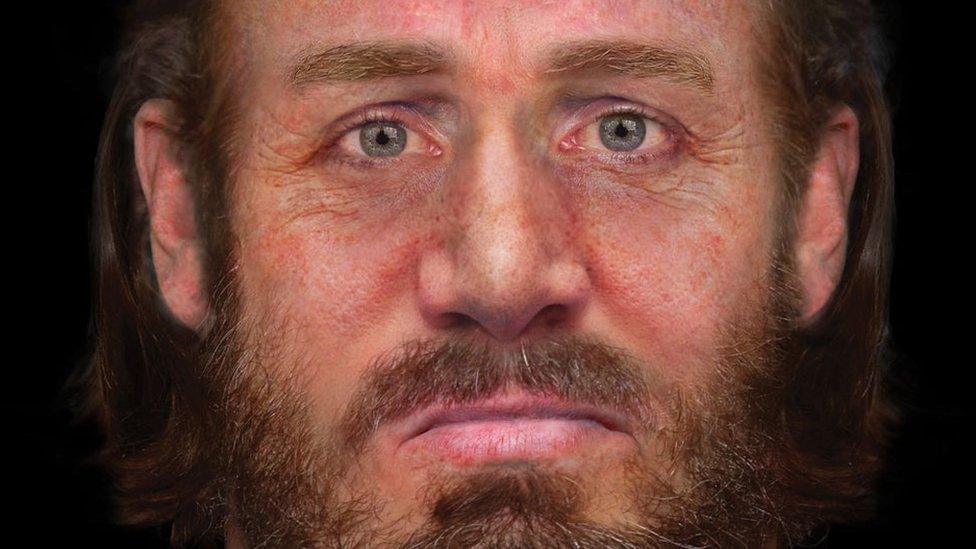Unlocking the secrets of 'six-headed chief' burial
- Published

The ancient burial site is believed to contain the remains of several generations of the same family
Archaeologists have used DNA analysis to uncover the secrets of a centuries old burial site nicknamed the "six-headed chief".
The grave at Portmahomack in the Highlands contains a man with a fatal sword wound to his skull.
He was buried with four skulls before his grave was later reopened to bury a second man, while a third man was buried in a nearby grave.
Analysis suggests some of the remains to be generations of the same family.
All the remains bar one date to the late 13th to early 15th century.
Archaeologists said the exception was one of the four skulls which dates to the 8th to 10th century and probably belonged to a Pictish monk.
The six-headed chief burial site was among a number of graves excavated by archaeologists at the site of the medieval Church of St Colman at Portmahomack on Tarbat Ness in Easter Ross.
The burials came at a time of warring between rival clans.

The burial site contains the remains of five men and a woman

Since the excavations in 1997, archaeologists from the University of York and FAS Heritage have been trying to shed light on the remains as part of the Tarbat Discovery Programme.
Historic Environment Scotland supported the new DNA and isotopic analysis of the six-headed chief.
The two men who share the grave are related and archaeologists believe they could have been first cousins once removed.
The four "extra" skulls are of a woman and three men, with one of these men believed to have been a monk whose skull could have been regarded as "prized relic" and was taken from a monastic cemetery on the site.
The two other male skulls were father and son, and in turn, grandfather and father of the second man to be buried in the grave with the first. The woman was this second man's mother.
The third man buried nearby is thought to be the second man's son.
Dr Lisa Brown, of Historic Environment Scotland, said the analysis had helped to provide "an insight into the relationships between individuals in a complex multi-person burial".
She said: "These are techniques that were not available when the excavations first took place."
Calum Thomson, chairman of Tarbat Historic Trust, said: "This exciting development once again confirms the significance of the Tarbat peninsula to Scotland's rich and diverse heritage."
- Published4 September 2019
